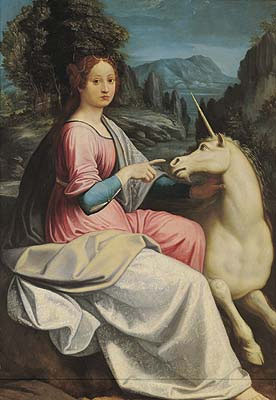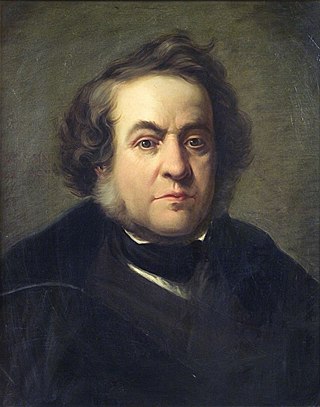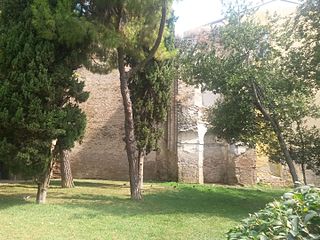
Camillo Rondani was an Italian entomologist noted for his studies of Diptera.

The princely House of Massimo is one of the great aristocratic families of Rome, renowned for its influence on the politics, the church and the artistic heritage of the city.

Luca Longhi was an Italian painter of the late-Renaissance or Mannerist period, active in and near Ravenna, where he mainly produced religious paintings and portraits.
The diocese of Cervia was a Roman Catholic diocese in Emilia-Romagna.

Pietro Pileo di Prata (c.1330–1400) was an Italian bishop and Cardinal. He was a significant diplomat and go-between in the affairs of his times, and was nicknamed the "cardinal with three hats", which he obtained successively from Urban VI, Clement VII, and Boniface IX.

Luigi Valenti Gonzaga was a cardinal of the Catholic Church. He was elected to the Roman Curia and the Papal diplomacy, and was also nuntius of Switzerland and Spain.

Pier Luigi Carafa (Senior) was a cardinal of the Catholic Church, and a member of the Roman Curia.

Luigi Rossini (1790–1857) was an Italian artist, best known for his etchings of ancient Roman architecture.

Bonincontro Morigia was an historical writer from Monza in northern Italy.
Fabrizio Paolucci (1726–1810) was a marquis (marchese) of the patrician Paolucci family. He is a relative of cardinal Fabrizio Paolucci, and an ancestor of Fabrizio Paolucci, who wrote biographies on the family.

The House of Rospigliosi is an ancient noble Italian family from Pistoia. Attested since the Middle Ages, it became wealthy through agriculture, trade and industry, reaching the apogee of its power and the high nobility status in Rome thanks to Giulio Rospigliosi, elected pope in 1667 with the name of Clement IX.
Vittorio Spreti (1887–1950) was an Italian historian of the nobility of Italy. He came from an ancient noble family of Ravenna, in the Marche, and was a marquess. His Enciclopedia storico-nobiliare italiana was published in eight volumes between 1928 and 1936.
Gurlino Tombesi or Gorlino of Ravenna was an Italian condottiero who fought for Ravenna and the Venetian Republic.

The Chiesa dei Teatini or the church of the Theatines, was a Baroque-style Roman Catholic church located in Rimini, region of Emilia-Romagna, Italy. The church was destroyed during the fierce bombardments preceding the Battle of Rimini in 1944, and only ruins of the interior of the apse remain in a park where the church once stood. A plaque recalls the former church.

The Biblioteca Classense is the public library of Ravenna, Italy.

The Basilica of Santa Maria in Porto was an important church in Ravenna, not far from Porta Nuova, on the via Roma, the north–south high street across the historic city centre. It houses the Greek Madonna.

The Tomb of Dante is an Italian neoclassical national monument built over the tomb of the poet Dante Alighieri in 1781. It is sited next to the Basilica of San Francesco in central Ravenna.
Morigia is a surname. Notable people with the surname include:
Desiderio Spreti (1414-1474) was an Italian historian of contemporary Ravenna.
Camillo Spreti was an Italian marquis and writer from Ravenna, who documented the history of monuments of his native city.














